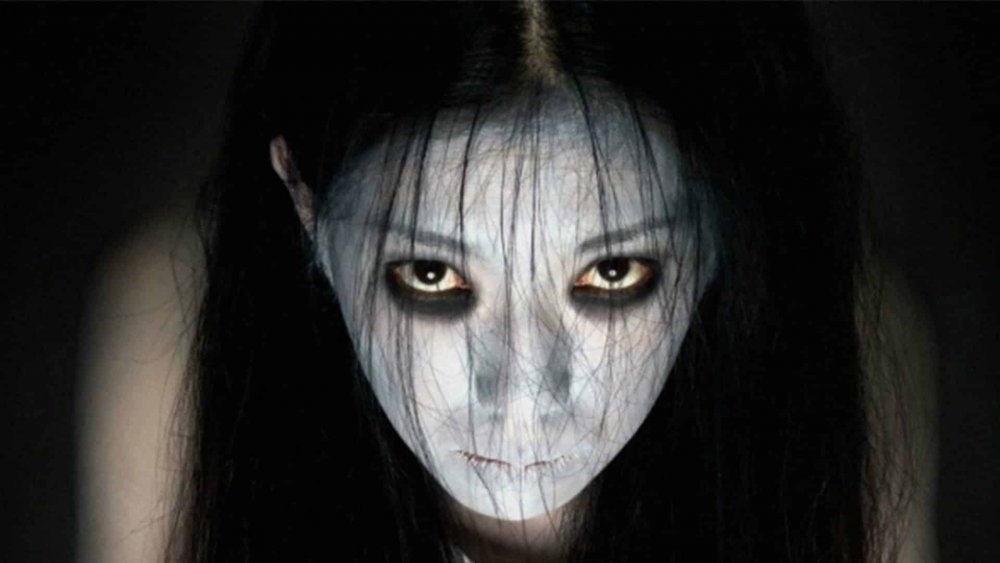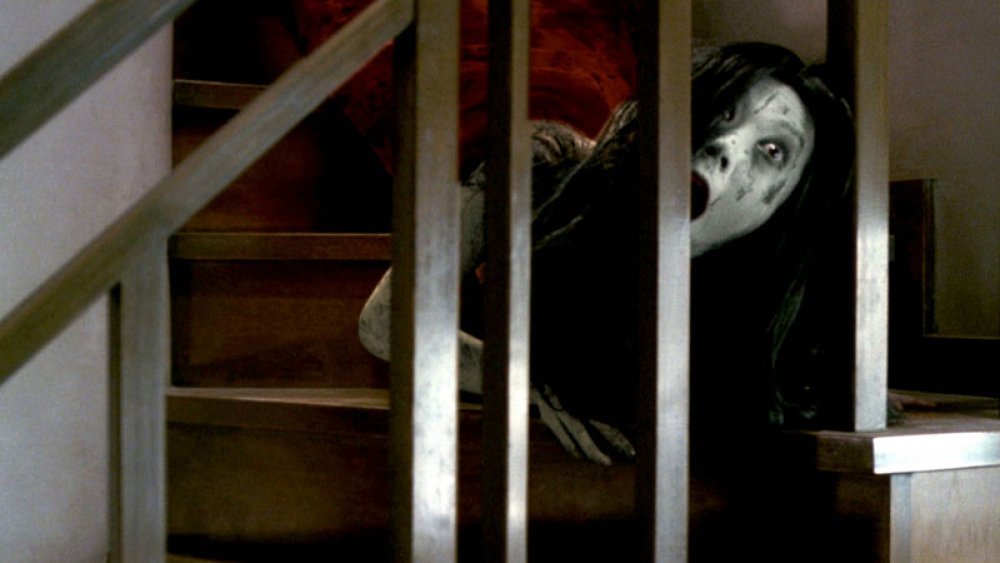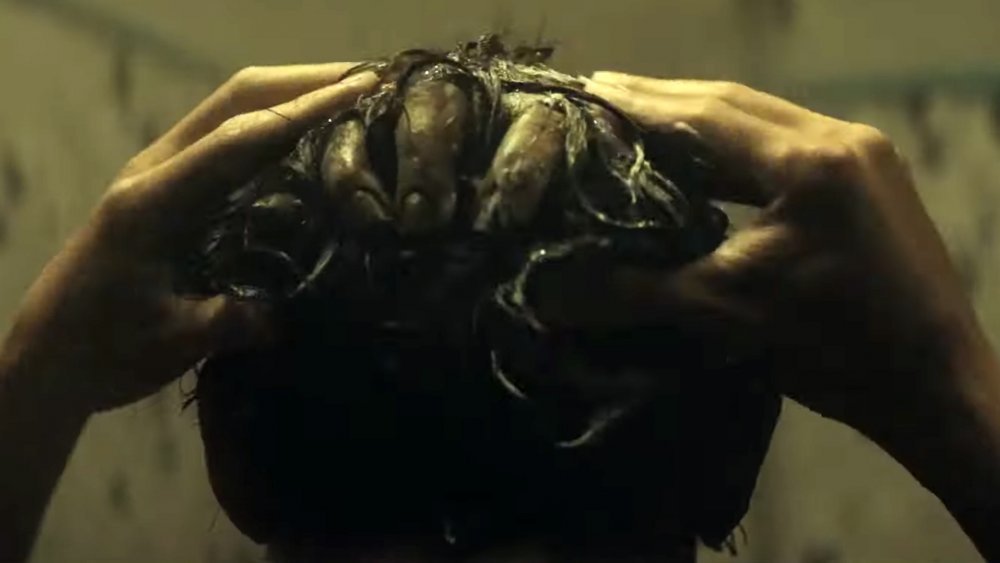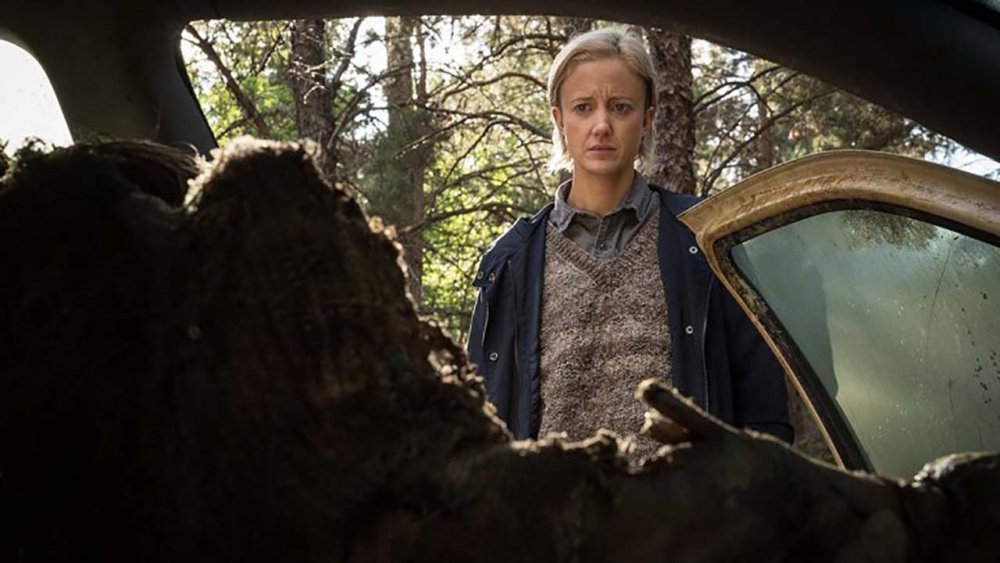How The Grudge Reboot Connects To The Original - Exclusive
It's no easy feat to reboot a well-loved property for a new audience, and it's an even more difficult task when said property has been reworked before. Director Nicolas Pesce nonetheless endeavored to do just that in rebooting The Grudge, the 2004 American remake of the original Japanese horror film Ju-On: The Grudge. The film, which serves as both a refresh and a side-sequel, expands on the core story of its predecessors and offers some haunting horrors not present in past installments. All throughout, though, there's an undeniable sense of connection to the Grudge movies of yesteryear.
Looper recently had the opportunity to speak with Pesce about The Grudge, and in our conversation with the director, he spoke about how the reboot links to the original. Be warned: There are mild spoilers for 2020's The Grudge up ahead.
Placing roots in the original Grudge, then growing something new
As a self-professed fan of Ju-On: The Grudge and Ju-On: The Grudge 2 that built the franchise as we know it today, Pesce was committed to the idea of adding his own ideas into the property's canon rather than making a straight remake, like 2004's The Grudge was. He explained that he found the Japanese Grudge films were more like an anthology — "every movie is a different set of characters, a different storyline, a different location" – and felt there was a clear window to "make a new installment in the anthology and in that way, stay true to the preexisting mythology."
"It sort of liberated me in a way to ground our story narratively in the mythology of the Japanese films and all the Grudge movies that have come before this one — but feeling okay to take it and make it my own tonally and atmospherically," said Pesce. "I think that we've really stayed true to what [original Grudge director Takashi] Shimizu put forth to those early films. The movie starts in Japan at the old house and springboards from there. It was always our intention to use the preexisting mythology as a jumping-off point."
Implementing famous markers of the Grudge property
Of course, one can't expand a canon with something fresh without utilizing in the new addition core characteristics of said canon — unless one wants to completely change the face of the franchise and irritate a lot of fans in the process. Pesce was well aware of this walking into the Grudge reboot, and carefully chose which unmistakable markers of the horror property he wanted to employ: a non-linear storyline, dripping-wet hair seen on the ghosts, fingers poking out through the back of someone else's head as they wash their hair, and even, to a certain extent, family drama.
"Every Grudge movie is told out of order with multiple characters and interweaving stories. It's a bit of a puzzle. Texturally, we wanted to keep all of that. But I think that with this film, we infused it with a bit more family drama. That's of course built into the old Grudge movies to an extent," Pesce detailed — adding that the three storylines of the new Grudge film (elderly people dealing with dementia, a middle-aged couple faced with a tough decision about their family, and a single mother grappling with her husband's death) come together because of the elements of horror woven throughout. "The non-linear storytelling was always the thing we were attached to."
He continued, "Then there were key images that we knew that have become uniquely Grudge. It's the hands coming out of the hair, the wet, long J-horror hair. There's certain [...] things that we knew we wanted branding-wise to keep it within the same realm as those old movies. But it was always about finding our own way into those moments and trying to make it feel like we didn't just shoehorn them in."
Keeping things grounded in the Grudge reboot
As Pesce noted, there's a fine line to ride when rebooting a horror property. One could easily become anxious and simply cram everything distinctly Grudge into the new feature to ensure that people would A) know that it's a Grudge movie, and B) be more inclined to see it. On the flip side, one could also get carried away with their own vision and take the reboot too far away from its predecessors, making it feel like something different in a bad way.
Pesce knew it was important to strike that balance, and ventured to keep The Grudge as grounded as possible when it came to the type of horror he was delivering and how he was delivering it. For the director, that meant making the ghosts look as realistic as possible in a way that would call to mind the original Japanese Grudge movies.
"I think that the opportunity that The Grudge provided me was, again, looking back at the Japanese films, it's not just one type of 'ghost scary.' It isn't the traditional sort of haunted house ghost story. There's elements of convection, of psychosis, there's jump scares, there's ghosts, there's a lot of different textures. It was fun to get to play with all those different things," Pesce shared. "I really didn't want to do big CG ghosts. I didn't think that, looking back at Shimizu's original films, that was really true to the movie. What I loved about what he did initially was the movies are so grounded. It really feels like a home video — like a family's home videos — and then ghosts just walk through the background. I knew that I wanted to keep them grounded."
In all, Pesce is proud of what The Grudge turned out to be, and teased that audiences will be more than satisfied with the film: "If you like the old ones, you're going to come see it. If you like horror movies, you're going to come see it. Now that I have your a** in the seat, I'm going to deliver something that is a story that I wouldn't get to tell otherwise."



